LE.SENS MEETS
le.sens meets
is a new section where we share the work of people that are special to us - artists and friends whose work is driven and inspired by a creative, positive and sustainable contribution to their field of work and the world in general. I believe that only by working together towards an ecological, free and better world we can make a difference.
Change starts with openness and inspiration for creative transformation, awareness and love - that has always been the inspiration behind le.sens
Leonie Sens
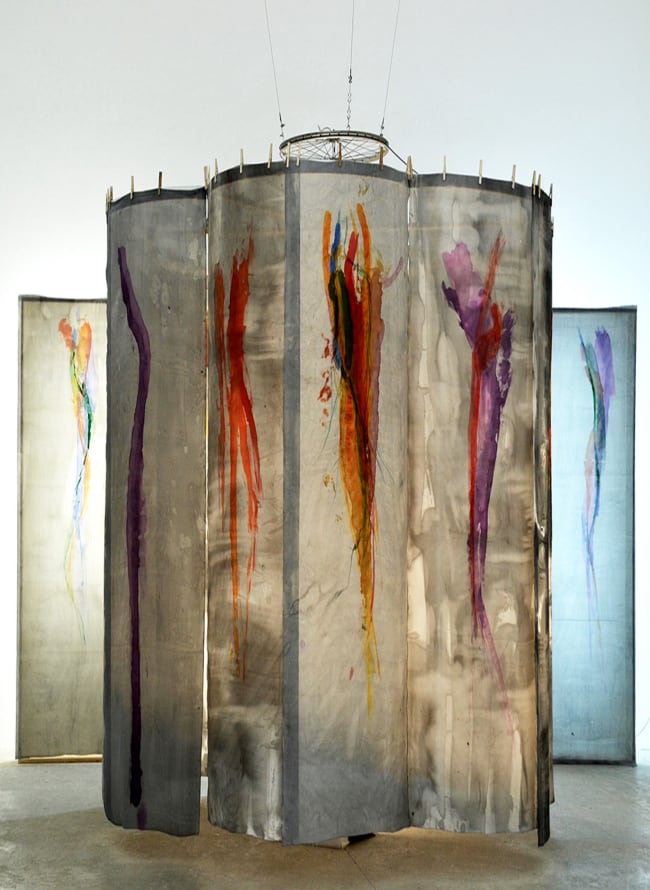
Jellyfish Carousel 2021
Revolving object of silk panels painted with India Ink and color
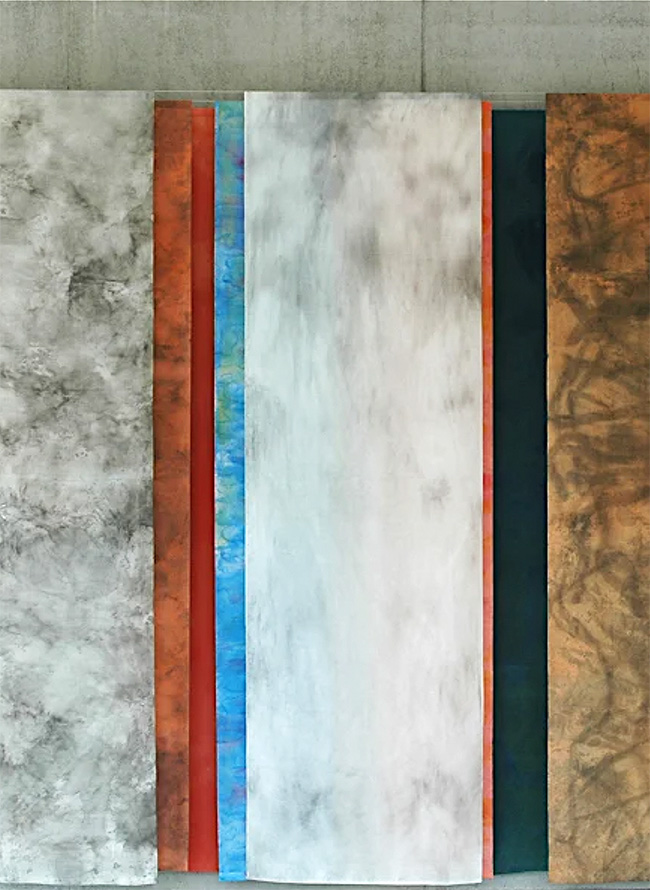
Die Winde 2006
natural color and India Ink on Silk
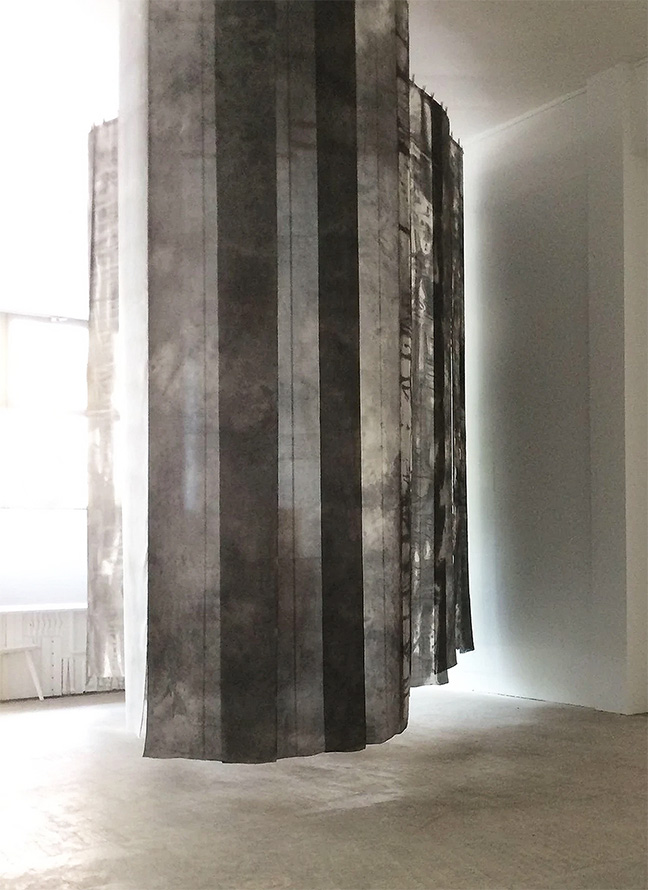
Floating Room 2021
India Ink on Silk
KOHO MORI-NEWTON
"The central question in Koho Mori-Newton´s India ink drawings is how a surface with markings, with soiling, with stains suddenly turns into a pictorial unity, into a coherent image. Where once a divergence of unrelated traces or stains of ink on paper, on canvas, or on silk dominated, an aesthetic whole forms instantaneously in a way that can only be partially intended: suddenly the traces of a hand, the spots, and the traces of dripping come together into a coherent aesthetic unity that is clearly delimited by the frame or the material edges of the plane and distinctly separated from its surroundings." (…)
Johannes Meinhardt - Koho Mori-Newton "Suddenly an Image" 2007 Stiftung Domnik p.14
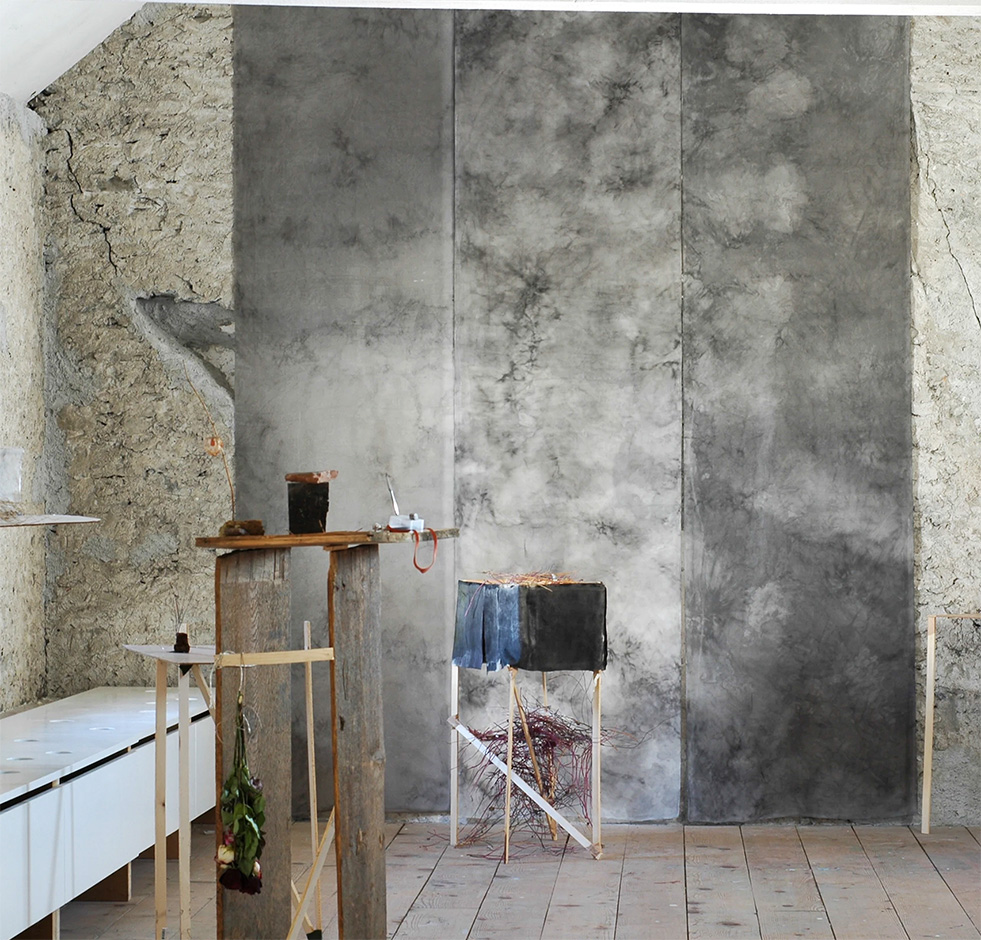
Schloss Haldenstein 2012
Arrangement of various materials, India Ink on silk
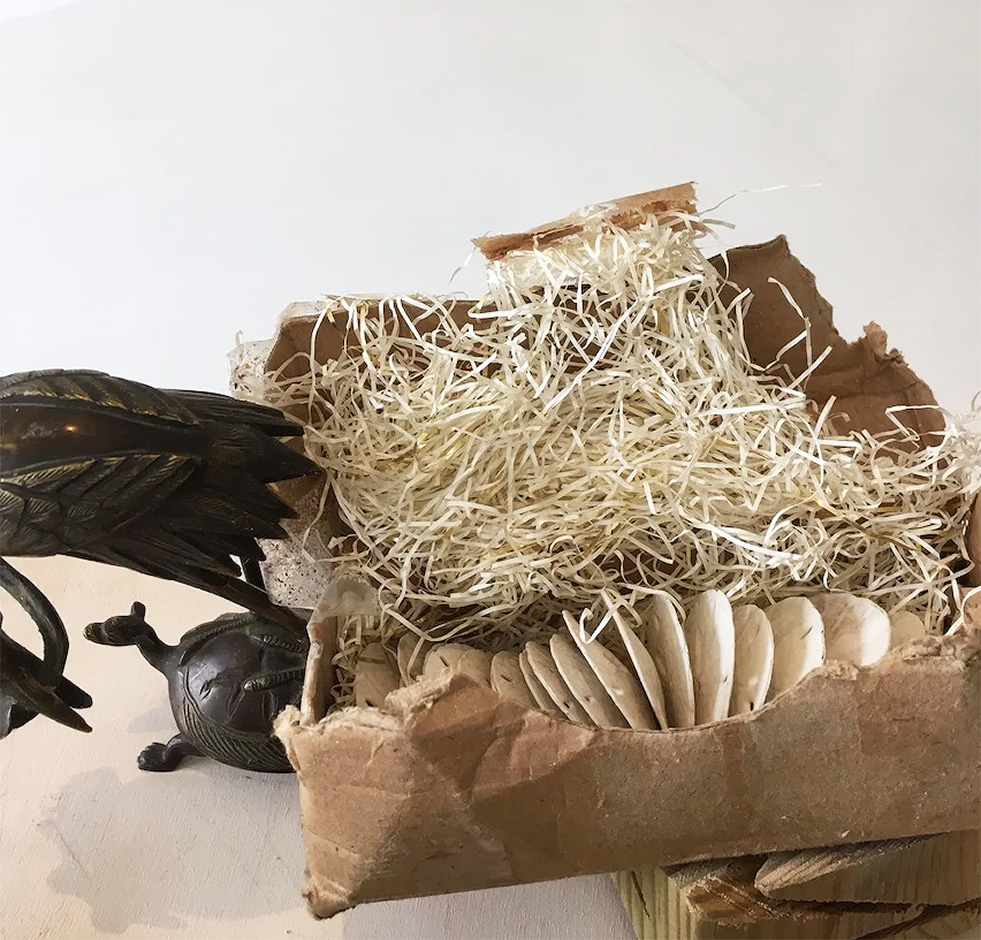
Table Object (sand dollars) 2015
crane statue, cardboard, wood, straw, sand dollars, table
A line should be self-sufficient.
As early as the 10th century the masters of Chinese India ink painting attempted to draw a line that could be self-sufficient. They believed that they could secretly infuse the line with 気 (ch'i, ki). (Ch'i: ether, breath, gas, and life force.) Through the master's Ch'i a drawn line on paper could even free itself from the surface and fly through the universe. But when does the master know that the lines have Ch'i? He begins to contemplate his drawn lines, but by what criteria should he question them?
I believe that was when aesthetic judgment at the level of perception began in the history of drawing and ink painting. In the European tradition of drawing, the line did not intrinsically express itself for a long time.
The lines were drawn on the surface in a similar manner and looked apparently identical.
The difference in the expression of a drawing originated mostly by the use of single lines: for example, by the density of the line, one controls the brightness or expresses materiality in various ways. Even though the single stroke has no intrinsic meaning, if every stroke is positioned accurately, it begins to play an important role within the picture and serves to create the character of the whole.
For the artist, it was always very important when drawing a line to be attentive to the correlation among the various lines. The single line of a drawing is often interchangeable and adaptable, thus requiring no aesthetic judgment.
Koho Mori-Newton
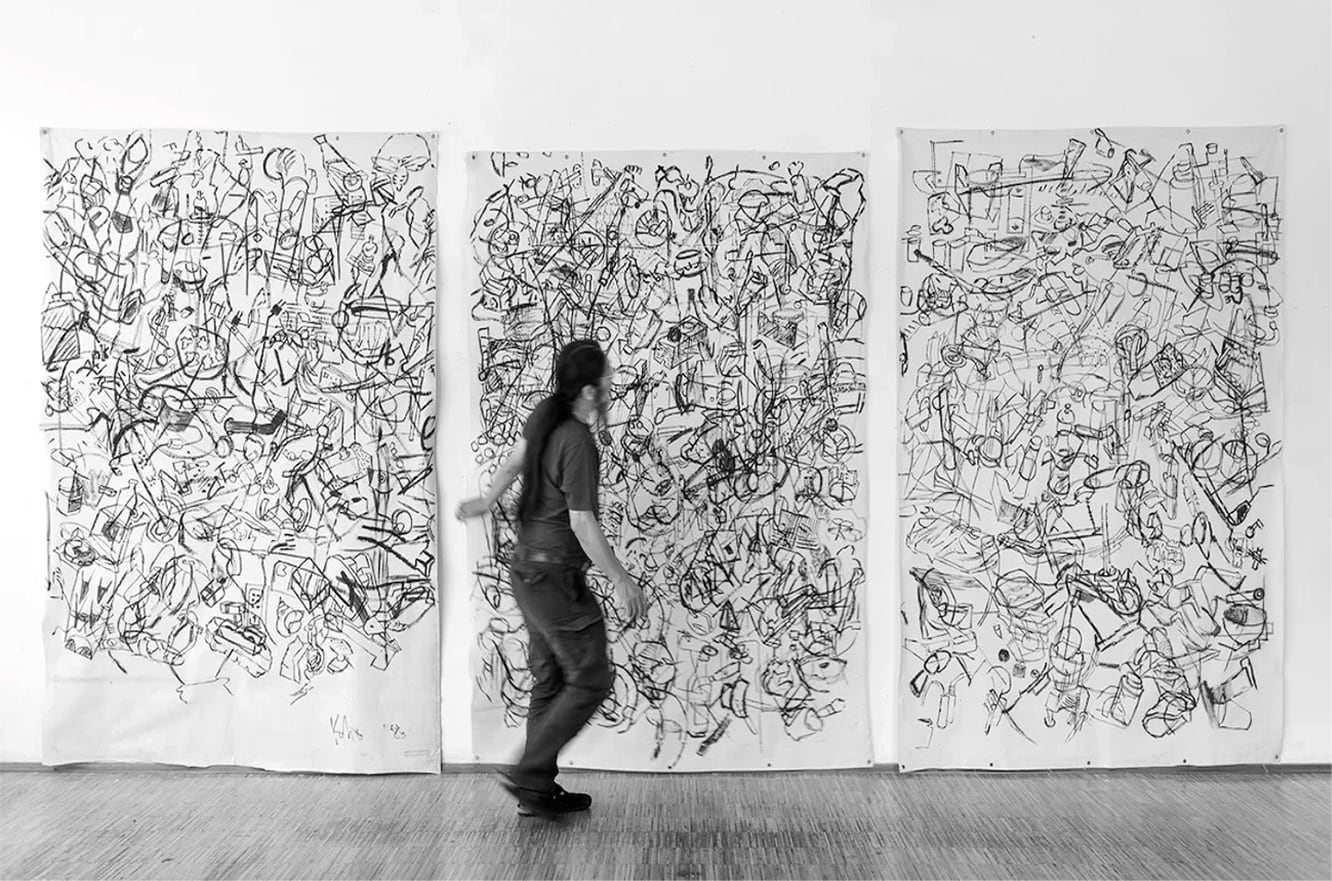
Superimposed Objects 1984-86
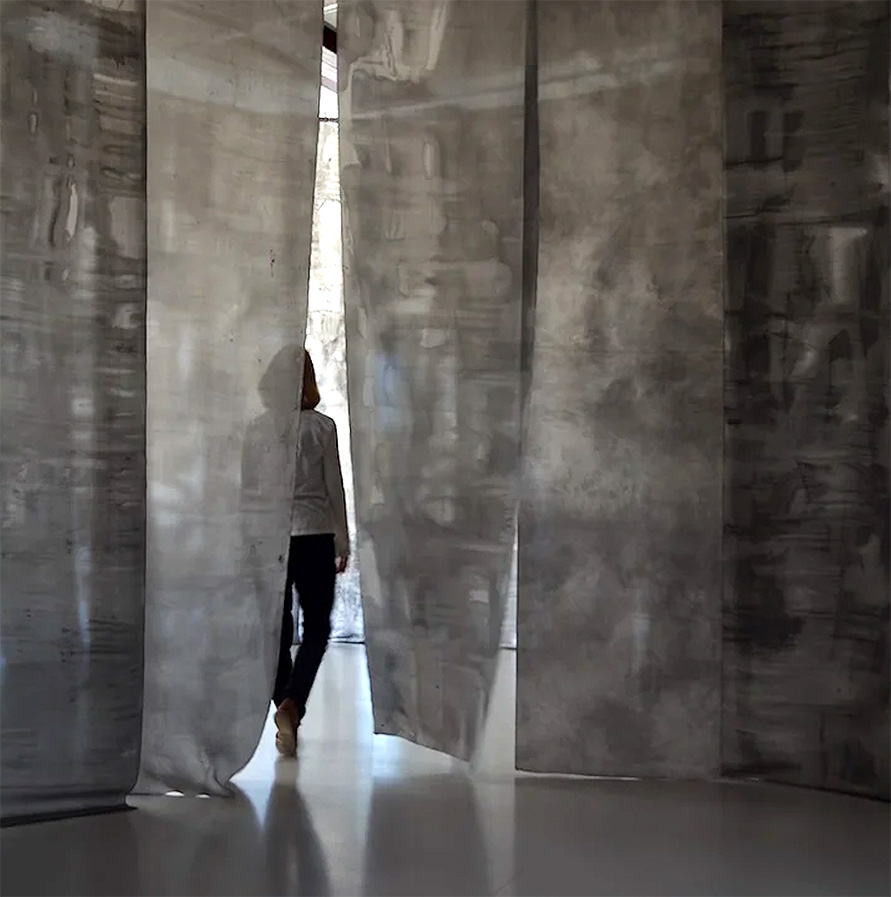
Path of Silk ’No Itention’ 2018
Textile Museum Augsburg, Germany
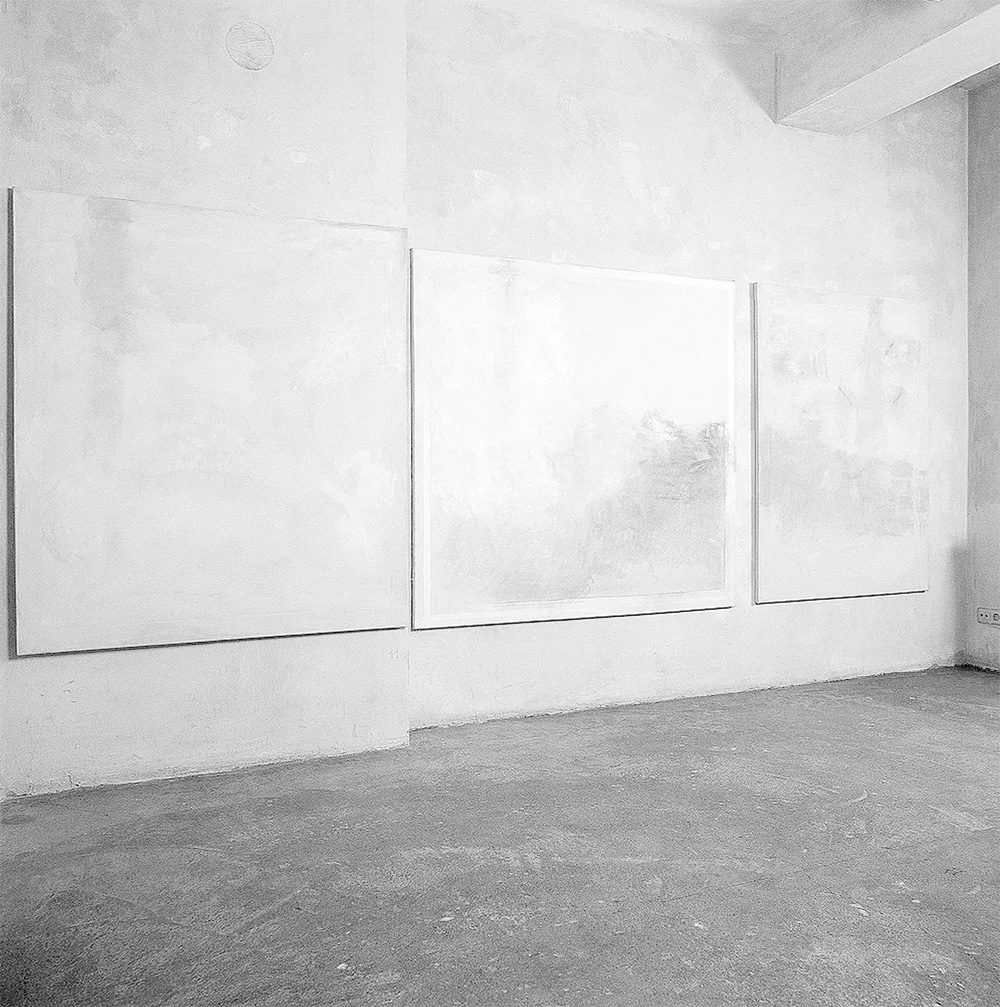
three white paintings 1998
pastel and oil on canvas
